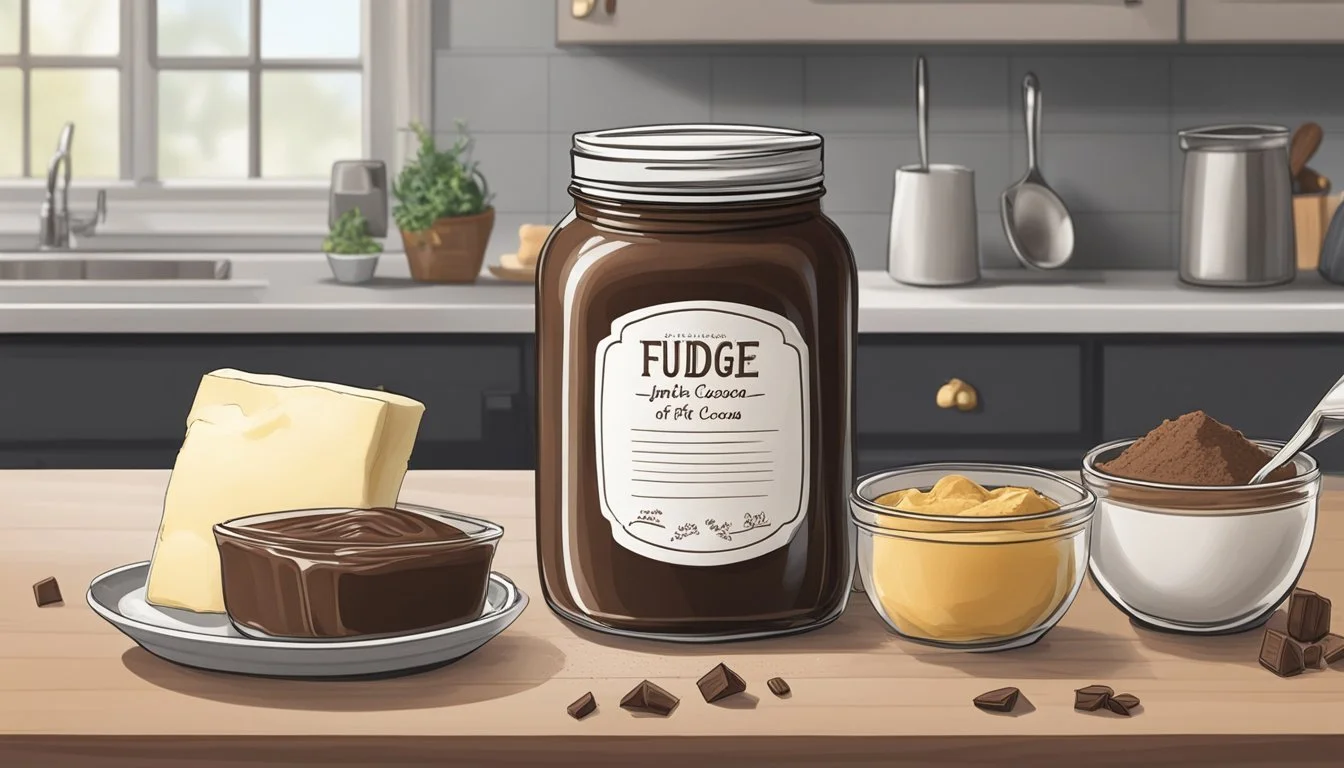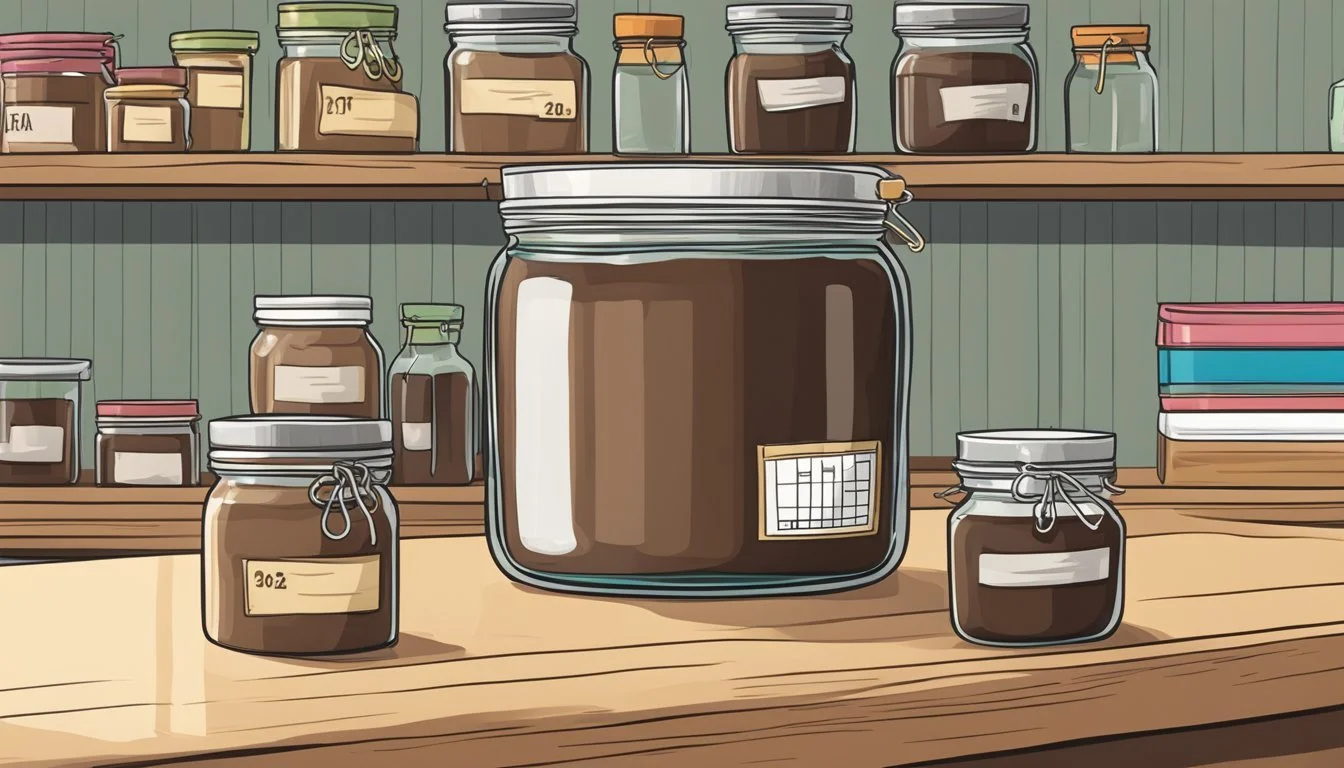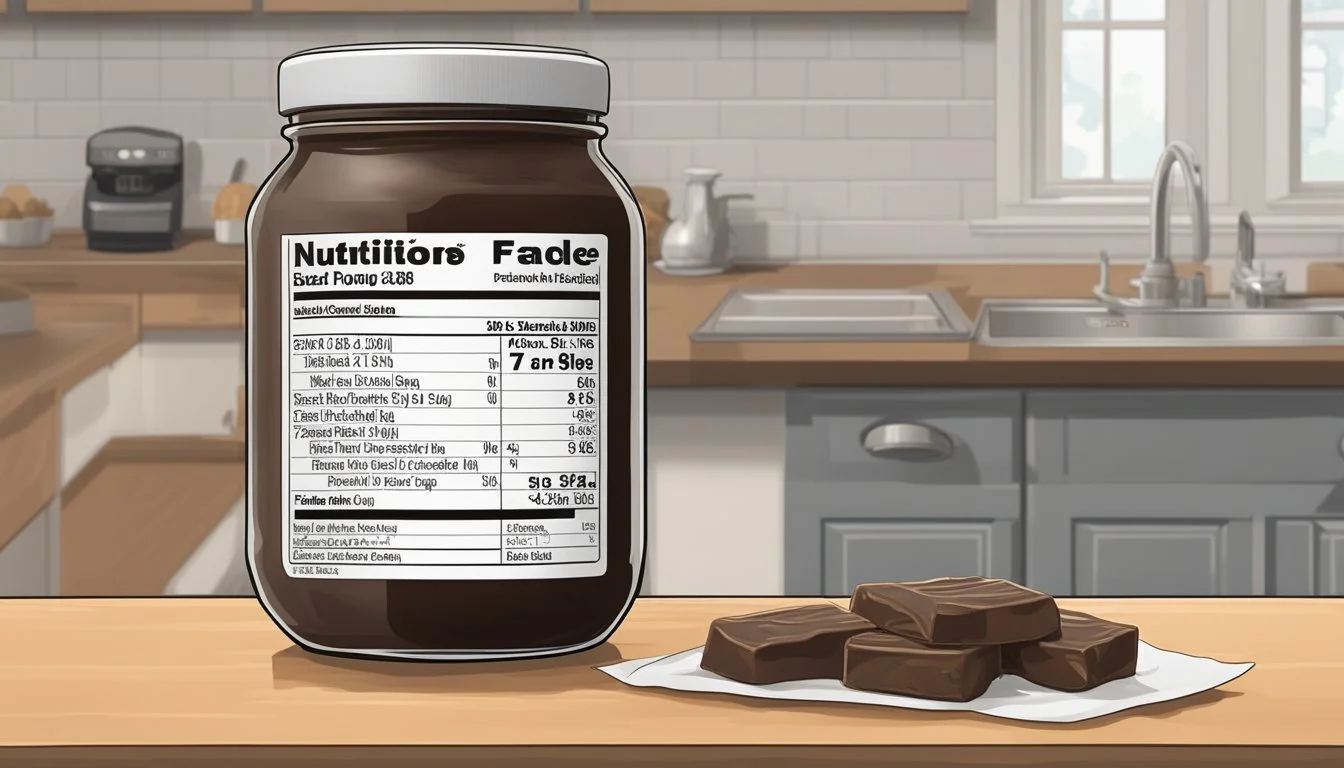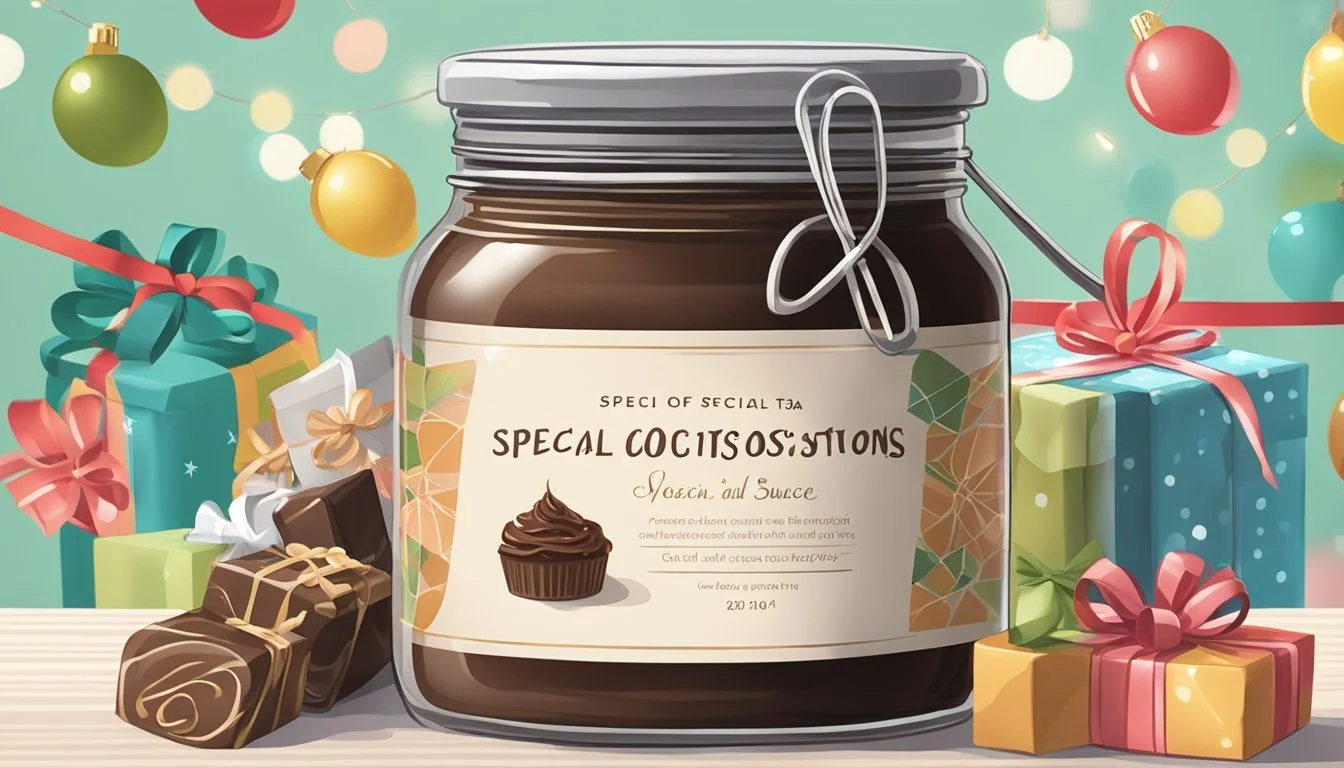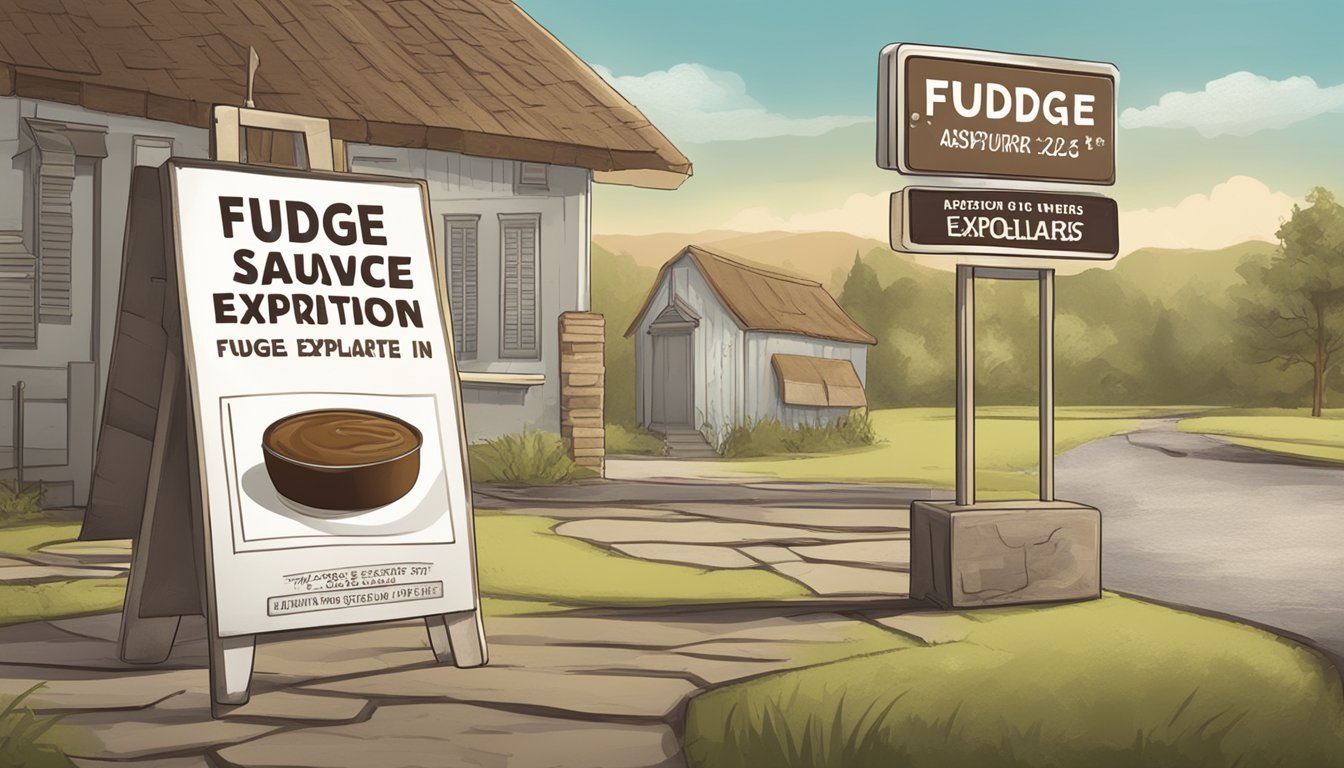How Long Does Fudge Sauce Last?
Shelf Life and Storage Tips
Hot fudge sauce is a cherished dessert topping, known for its rich, chocolatey flavor that pairs exceptionally well with a diverse array of sweet treats. As it accompanies everything from ice cream (how long does cream last?) to brownies, the longevity of hot fudge sauce is a matter of interest for both home cooks and dessert enthusiasts alike. Typically, homemade hot fudge sauce can be stored in an airtight container and will retain its quality for up to three weeks when refrigerated.
The durability of hot fudge sauce is attributed to its ingredient composition, which often includes cocoa powder, sugar, butter (how long does butter last?), and milk or cream. Store-bought varieties might contain preservatives that extend their shelf life further, but for most homemade sauces, the absence of preservatives necessitates proper storage and timely usage. When the desire to savor this delectable topping arises, it can be quickly reheated, generally in a microwave or saucepan, until it regains its smooth, pourable consistency.
Understanding the storage and preservation of hot fudge sauce ensures that it remains a delicious addition to many desserts. It's crucial to keep an eye on the texture and flavor, as these are strong indicators of the sauce's condition. Observing proper storage techniques will guarantee that the next scoop of ice cream or slice of cake can be drizzled with the perfect amount of this classic dessert topping.
Ingredients and Recipe Composition
The longevity of fudge sauce largely depends on its ingredients and how they interact. This section explores the core components and possible enhancements.
Essential Ingredients
The foundation of fudge sauce comprises several key ingredients which are crucial for the desired texture and taste.
Butter: Acts as a base; salted or unsalted butter can be used depending on taste preference.
Sugar: Typically used in granulated form, sugar sweetens the sauce and contributes to its smooth consistency.
Cream: Heavy cream is often chosen for its richness, adding a creamy texture to the fudge sauce.
Cocoa Powder: Unsweetened cocoa powder provides the chocolate flavor without adding extra sugar.
Chocolate: Chocolate chips or dark chocolate are usually melted into the sauce; unsweetened is preferable for sweetness control.
Milk: Sometimes used in place of or alongside heavy cream to adjust the richness.
Vanilla Extract: A splash of vanilla extract enhances the chocolate flavor.
Optional Add-ins
These ingredients are not essential but can be added to tweak the flavor and texture of the homemade fudge sauce.
Corn Syrup: Often included for added smoothness, it also helps to prevent sugar crystallization.
Peanut Butter: Can be swirled into the sauce for a nut-flavored variation.
Dark Chocolate: Integrating dark chocolate can intensify the richness of the sauce.
Simple Ingredients: Elements such as a pinch of salt or extracts can be added to create different flavor profiles.
Cooking Methods
The preparation of homemade fudge sauce can be accomplished using two main methods: the stovetop and the microwave. Each approach requires attention to detail to ensure a perfectly smooth and rich consistency.
Stovetop Preparation
For stovetop preparation, one begins by combining the sauce ingredients in a saucepan. The cook should heat the mixture over medium heat, stirring continuously. This promotes even melting and prevents the sauce from burning. Cook time on the stove typically ranges until the mixture achieves a smooth, uniform consistency. Here's a concise breakdown of the stovetop cooking process:
Prep Time: 5 minutes
Cook Time: 10 minutes
Total Time: 15 minutes
Combine sugar, cocoa powder, and any additional elements as per the recipe in a saucepan.
Place the saucepan on the stove and set to medium heat.
Stir the mixture continuously until it thickens and becomes glossy.
Microwave Technique
The microwave technique is a quicker alternative for making fudge sauce. One should place the ingredients in a microwave-safe bowl. The total time in the microwave is divided into short intervals, after each of which the sauce must be stirred to ensure even heating. Here is the typical process:
Prep Time: 5 minutes
Microwave Time: 3-5 minutes
Total Time: Less than 10 minutes
In a microwave-safe bowl, mix the sugar, cocoa powder, and other ingredients.
Heat in the microwave on high power for 30-second bursts.
After each interval, stir the sauce to avoid hotspots and ensure homogeneity.
Regardless of the method used, it is crucial to monitor the sauce closely throughout the preparation process to achieve the desired texture and flavor.
Storage Guidelines
Proper storage is essential to extend the longevity and maintain the quality of fudge sauce. Whether refrigerated, frozen, or kept in the pantry, using the right containers is key to preventing spoilage and preserving flavor.
Refrigeration
Refrigeration is recommended for keeping fudge sauce fresh, especially after opening. Storage in the fridge can last up to 2 to 3 weeks when kept in an airtight container to prevent the sauce from absorbing other odors. Glass containers, like mason jars, are ideal for this purpose. Any leftover fudge sauce should be tightly sealed to ensure freshness.
Freezing Options
For long-term storage, freezing fudge sauce is an effective option. It should be placed in a freezer-safe airtight container or a heavy-duty freezer bag. When properly stored, fudge sauce can remain in good condition for several months, although it's best consumed within 1 to 2 months for optimal taste. To use, simply thaw in the refrigerator.
Pantry Storage
Unopened fudge sauce can be stored in the pantry at room temperature where it will last until the best-by date. It should be kept in a cool, dark place away from direct sunlight in its original packaging or a sealed jar to protect against moisture and pests. Once opened, however, the sauce should be moved to the refrigerator to ensure its longevity.
Serving Suggestions
Hot fudge sauce is a versatile topping that elevates the flavors and aesthetics of various desserts. Proper serving can significantly enhance the culinary experience.
Accompaniments
Hot fudge sauce perfectly complements a plethora of dessert options. Here are some specific pairings:
Ice Cream: A classic drizzle on vanilla or chocolate ice cream.
Sundaes: It serves as the essential component in constructing an indulgent ice cream sundae, often layered with scoops of ice cream, whipped cream, and a cherry on top.
Brownies: A warm pour over freshly baked brownies adds a rich, gooey texture.
Presentation Ideas
The presentation of hot fudge sauce can transform a simple dessert into an appealing treat.
Tableside Pour: Serve the sauce in a warmed pitcher for guests to pour over their desserts, which adds an interactive element to the dining experience.
Decorative Drizzle: Skillfully drizzle the sauce over desserts in patterns for an artistic touch.
Layering: For sundaes and parfaits, alternate layers of hot fudge with other ingredients to create a visually striking and flavorful delight.
Nutritional Profile
The nutritional profile of fudge sauce is important to consider, as it contains varying amounts of calories, fats, carbohydrates, and sugars. This section will delve into the health aspects associated with these nutritional components.
Health Considerations
Calories: Fudge sauce is high in calories. A typical serving can have several hundred calories, depending on the ingredients used, such as sugar and chocolate.
Fat Content: It contains saturated fat, with amounts varying based on the recipe. Butter and chocolate, common ingredients in fudge sauce, are primary sources of this type of fat.
Cholesterol: Homemade fudge sauce may contain cholesterol due to dairy products such as butter and milk. The cholesterol content can impact individuals monitoring their heart health.
Sodium: While not a significant source of sodium, fudge sauce may contain minimal amounts contributing to the daily intake.
Carbohydrates: High in carbohydrates, predominantly from sugars, fudge sauce can affect blood sugar levels.
Fiber: Fudge sauce typically contains little to no fiber since its main ingredients lack this nutrient.
Protein: There's a minimal amount of protein in fudge sauce.
Nutritional Information:
Polyunsaturated fat content is usually low in traditional fudge sauce recipes.
For more detailed nutritional information, one should refer to specific recipes or product labels, as the values can vary widely.
Taste and Texture
The quality of fudge sauce is largely determined by its consistent smoothness and rich chocolate flavor. A balance between thickness and creaminess ensures an indulgent topping for various desserts.
Consistency Adjustments
To maintain a smooth and thick texture, the ratio of fat in the form of cream or butter to the cocoa content is crucial. A fudge sauce should pour easily yet cling to desserts like ice cream without being runny. Adjusting consistency can involve:
Adding more cream to thin out an excessively thick sauce.
Cooking the mixture longer if the sauce is too runny, allowing some liquid to evaporate.
Flavor Enhancements
Enhancing the flavor of fudge sauce is often about emphasizing the chocolate flavor and adding complementary tastes. Here are specific ways to enhance flavor:
Using high-quality chocolate to ensure a rich and decadent flavor.
Incorporating a pinch of sea salt can accentuate the chocolate and add depth.
Quality chocolate and precise textural adjustments are vital for achieving the ideal taste and texture in fudge sauce.
Reheating Instructions
When one needs to reheat hot fudge, the primary goals are to restore its smooth consistency and warm temperature without burning or separating the sauce.
Safely Reheating Hot Fudge
In the Microwave:
Place the hot fudge sauce in a microwave-safe container.
Heat in 10-second intervals, stirring after each, until it reaches the desired warmth.
On the Stove:
Transfer the sauce to a small saucepan.
Warm over low heat, stirring frequently to prevent scorching.
When using either method, it's crucial to stir often to ensure even heating. One should never let the sauce boil, as this can degrade the texture and taste. Homemade hot fudge is sensitive to high heat, so moderation and patience are key to a perfectly reheated sauce.
Homemade Versus Store-Bought
When assessing the longevity of fudge sauce, one must consider whether it is homemade or store-bought, as each has distinct characteristics that affect shelf life.
Comparing Qualities
Homemade fudge sauce typically contains fresher ingredients without preservatives, which can lead to a richer, more authentic flavor. However, the absence of these preservatives means that homemade fudge sauce generally has a shorter shelf life. It can be stored in the refrigerator for up to three weeks, and it should be reheated on the stove for optimal taste and texture.
Store-bought fudge sauce, conversely, often includes stabilizers and preservatives to extend its shelf life. This convenience allows consumers to keep store-bought sauce in their pantry for much longer before opening, and typically for weeks in the refrigerator once opened. The trade-off might be a less pronounced depth of flavor compared to its homemade counterpart, but the extended shelf life is useful for long-term planning and reduces the need for frequent preparation.
Quality Aspect Homemade Fudge Sauce Store-Bought Fudge Sauce Preservatives Lacks preservatives; shorter shelf life Contains preservatives; longer shelf life Flavor Richer, more authentic flavor Consistent but less depth of flavor Shelf Life (Refrigerated) Up to 3 weeks Several weeks to months post-opening Reheating Best reheated on stove Can often be reheated in microwave
One's choice between homemade and store-bought fudge sauce may rely heavily on these qualities. Homemade options offer a superior flavor profile that might be more aligned with those seeking a traditional experience, while store-bought versions offer convenience and longevity.
Special Occasions and Gifting
When considering the perfect gift for a special occasion, homemade treats like old fashioned hot fudge sauce are an exceptional choice. They offer a heartwarming and personal touch that store-bought sweets often lack. Such a gift is especially suitable during the summer months when ice cream gatherings are frequent, and a decadent bottle of fudge sauce can become the star of the dessert table.
Creative Gift Ideas
Homemade Fudge Sauce Set: Include a jar of rich, creamy old-fashioned hot fudge sauce accompanied by gourmet toppings like maraschino cherries and colorful sprinkles. This combo transforms a simple ice cream into a festive sweet treat.
Fudge Sauce Kit: Assemble a DIY fudge sauce kit with all the dry ingredients needed, neatly layered in a mason jar. Attach a small recipe card with clear instructions, ensuring they have a delightful experience making their own sauce.
Ice Cream Sundae Basket: Curate a basket with a variety of summer essentials including your homemade hot fudge sauce, an ice cream scoop, cones, and other favorite toppings. This not only serves as a thoughtful gift but also as an invitation to indulge in a shared pleasure.
Comments and Ratings
Gathering comments and ratings provides valuable insights into the shelf life and quality of fudge sauce.
User Feedback
Comments from users tend to highlight their personal experiences with the product's shelf life. They may specify how long the sauce remained fresh under certain storage conditions, giving other users practical advice. Many comments also include keywords such as "refrigeration," "airtight containers," and "consistency" to describe storage best practices.
Ratings table:
User Star Rating Comment Erica 5 stars Lasted well for 2 weeks in the fridge. FoodieFan123 4 stars Great taste but thickened after 1 week.
Incorporating Critiques
Manufacturers and recipe creators often use critiques to refine shelf life recommendations. If users report a shorter lifespan than advertised, adjustments to the recommended storage methods may be warranted. This feedback loop helps producers align star ratings and commentary with the actual user experience, maintaining trust and transparency.
Alterations and Substitutions
When making hot fudge sauce, one can make various alterations and substitutions to accommodate dietary preferences or to adjust the flavor profile. It's crucial to use substitutions that maintain the sauce's texture and taste integrity.
Dietary Adjustments
Lactose-Free: For those avoiding lactose, replacing butter and milk with lactose-free alternatives, such as plant-based butter and nut milks (almond, cashew, or coconut milk), ensures a creamy and rich sauce that is more digestible.
Vegan: Vegan hot fudge sauce is achievable by using plant-based butter and milk substitutes. Additionally, ensure that the dark chocolate or cocoa powder does not contain any milk products.
Sugar Substitutes: Diabetic-friendly alternatives like stevia or monk fruit can replace sugar. Note that sweeteners vary in sweetness intensity, so adjustments should be made according to taste.
Flavor Variants:
Caramel Sauce: One can introduce a caramel sauce flavor by adding brown sugar and a bit more butter, creating a richer, deeper flavor with a caramel undertone.
Peanut Butter: For a peanut butter twist, incorporate smooth or crunchy peanut butter into the sauce. This will not only introduce a nutty flavor but also add a thicker consistency.
Lighter Option: To create a lighter sauce, reduce the amount of sugar and butter, and use a lighter milk alternative, such as skim milk. This will result in a less rich, but still enjoyable sauce.
Remember that substitutions may alter the final consistency and flavor of your sauce. It's important to taste and adjust accordingly to achieve the desired result.
Tips for Perfect Fudge Sauce
Creating the perfect fudge sauce hinges on using simple ingredients and following easy methods to achieve a delightful topping for desserts. The following advice will ensure one yields a fudge sauce with optimum flavor every time.
Expert Advice
Ingredient Quality: Select high-quality cocoa powder and, if desired, light corn syrup, as these ingredients are foundational to the sauce's flavor. Premium cocoa powder imparts a richer, more intense chocolate taste.
Consistency and Cooking: For a smooth texture, combine ingredients over low to medium heat, stirring continuously. A combination of melting and then gently boiling the mix helps achieve a thick consistency without scorching.
Stirring: Constant stirring prevents the formation of lumps and ensures even distribution of heat, which is crucial for a homogenous sauce.
Vanilla Extract: Add vanilla extract after removing the sauce from heat. It enhances the chocolate flavor and adds a layer of complexity.
Storage: Store the fudge sauce in a sealed container in the refrigerator to extend its shelf life and maintain its flavor. It typically remains fresh for up to 1 month.
By adhering to these tips, one can easily produce a delectable fudge sauce with simple ingredients and straightforward methods, perfect for enhancing a wide variety of desserts.
Storage Lifespan Detailed
When storing fudge sauce, its shelf life is significantly influenced by storage conditions and the type of container used.
Factors Influencing Shelf Life
Temperature: Fudge sauce kept in the fridge typically exhibits a longer shelf life compared to that stored at room temperature. Refrigeration can help the sauce maintain quality for a few weeks.
Container: Utilizing an airtight container is crucial for maximizing shelf life. Containers limit exposure to air and prevent the introduction of contaminants.
Freezer Use: For long-term storage, fudge sauce can be placed in the freezer, which will prolong its shelf life even further than refrigeration. It should be noted that freezing can alter the texture upon thawing.
Consistency of Storage Conditions: Fluctuations in storage temperature can affect the sauce's quality. Consistent, cool temperatures are recommended.
Safety and Spoilage Signs
When it comes to fudge sauce, safety and shelf life are paramount. Knowing signs of spoilage can prevent foodborne illness and ensure the quality of the sauce.
Recognizing Bad Fudge Sauce
Odor: A change in aroma is a clear indicator. Fudge sauce that has gone bad may possess a sour or off smell that is noticeably different from its original chocolatey scent.
Texture: The consistency of fudge sauce should be smooth. If it appears lumpy or has a separated layer of liquid, the sauce may have spoiled.
Color: Any discoloration, such as a dull or greyish tinge, suggests that the fudge sauce is past its prime.
Taste: If there's a hint of abnormal flavor upon a small taste test, the sauce should not be consumed.
Mold: The presence of mold, which could appear as fuzzy spots in various colors, is an undeniable sign of spoilage.
Storing fudge sauce in an airtight container in the fridge can extend its shelf life. If any of the spoilage signs are present, the sauce should be discarded immediately to ensure safety.
Frequently Asked Questions
When it comes to enjoying fudge sauce, knowing proper storage techniques ensures both quality and safety. This section addresses common concerns regarding the shelf-life and care of this decadent dessert topping.
Common Inquiries
How long does homemade hot fudge sauce last at room temperature?
Homemade hot fudge sauce should be stored in an airtight container and can last up to 1 week at room temperature. For optimal quality, one should avoid exposing it to direct sunlight and keep it in a cool, dark place.Can you refrigerate hot fudge sauce and how does it affect its longevity?
Refrigeration can extend the lifespan of hot fudge sauce, making it last up to 3 weeks. It should be sealed properly to maintain its quality and prevent it from absorbing other odors.Is it possible to freeze hot fudge sauce?
Yes, one can freeze hot fudge sauce. When stored in an airtight, freezer-safe container or tightly sealed with plastic wrap, it can last for 2 to 3 months.What are the signs that hot fudge sauce has gone bad?
Indications of spoiled hot fudge sauce include an odd smell, a change in color, or the presence of mold. It's essential to discard any sauce that exhibits these signs.How do you properly reheat hot fudge sauce leftovers?
To reheat, one should gently warm the sauce over low heat on the stove, stirring frequently. Alternatively, reheating in a microwave-safe container at shorter intervals while stirring in between can also maintain a desirable consistency.What's the best way to maintain the quality of old-fashioned hot fudge sauce?
Keeping old-fashioned hot fudge sauce in an airtight container, away from fluctuations in temperature and moisture, best preserves its rich flavor and smooth texture.
Conclusion
When one considers the preservation of fudge and hot fudge sauce, understanding the proper storage techniques is crucial. Fudge, traditionally a creamy, soft confectionary, should ideally be kept at room temperature in an airtight container, where it can last for 1 to 2 weeks. Refrigerating fudge may extend its shelf life to 2 to 3 weeks, but it can alter the texture, potentially leading to a drier consistency.
Hot fudge sauce, on the other hand, differs from its solid counterpart, possessing a pourable consistency ideal for desserts. Once made, it should cool to room temperature before being sealed and stored in the refrigerator. Here, it can stay fresh for up to 3 weeks. Reheating is best done in a microwave in 30-second intervals, stirring between each, until reaching the desired temperature.
To ensure optimal enjoyment of these dessert enhancers, attention to storage details is imperative. Below is a brief summary for reference:
Fudge:
Room Temperature: 1-2 weeks
Refrigerated: 2-3 weeks (with possible texture changes)
Hot Fudge Sauce:
Refrigerated: Up to 3 weeks
Reheat in microwave, with caution to avoid overheating
Users should note that the taste and quality of both fudge and hot fudge sauce are best when consumed within these time frames. Beyond these periods, degradation in texture and flavor may diminish the pleasure derived from these delightful sweet treats.


